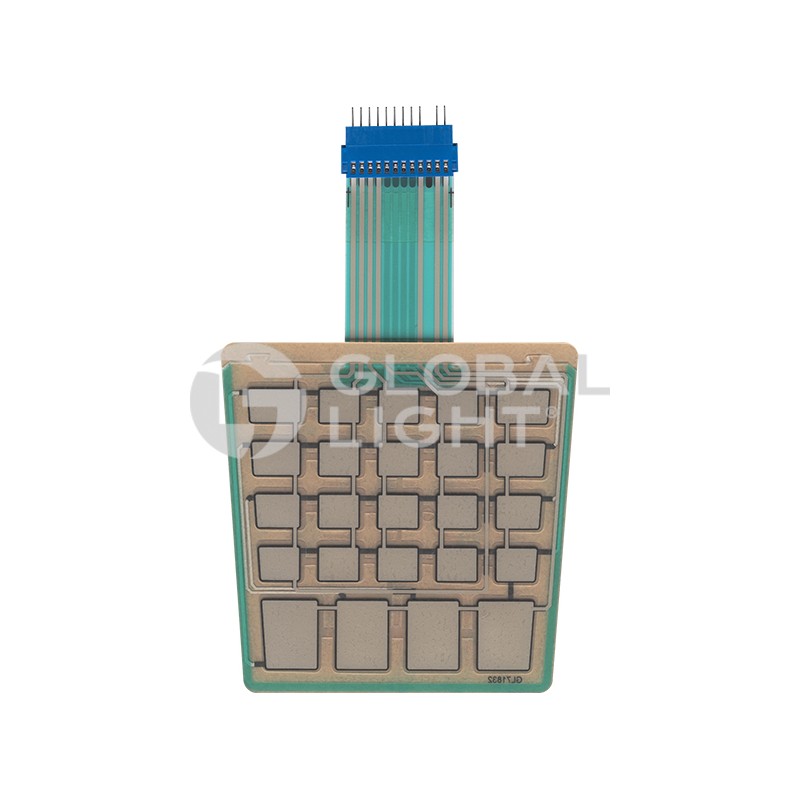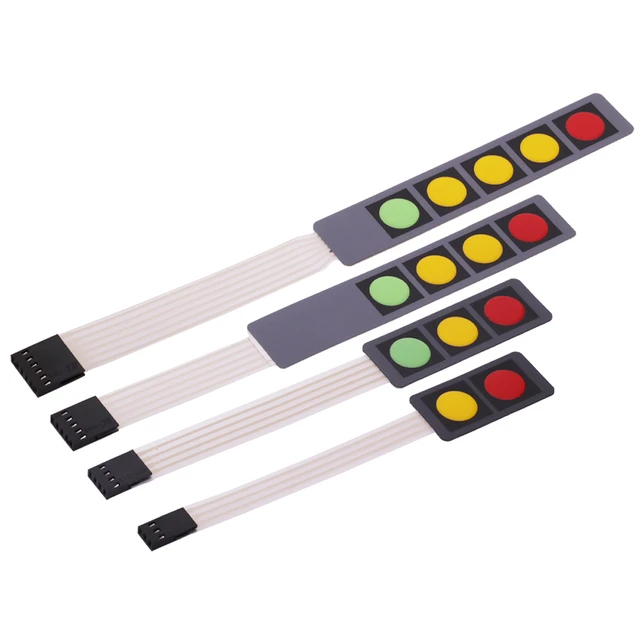Understanding Membrane Layer Switches: The Trick to Dependable and durable Controls

What Are Membrane Layer Buttons?
Membrane buttons are an advanced service in the world of customer interface innovation, combining capability and style flawlessly. These tools function as a user interface between individuals and digital systems, integrating numerous elements right into a compact format. Typically built from adaptable, slim layers of materials, membrane switches are created to react to touch, allowing customers to communicate with equipment and electronic devices properly.
The primary elements of a membrane switch include a printed circuit layer, visuals overlay, and a spacer layer that prevents unplanned activation. The graphic overlay can be personalized to show brand name identity or customer choices, improving appearances while making certain functionality. Membrane switches are typically made use of in different applications, including medical devices, consumer electronic devices, and commercial tools, owing to their durability and resistance to environmental elements such as dampness and dust.
One of the key benefits of membrane switches is their capability to stand up to damage, making them excellent for high-traffic atmospheres. Furthermore, they are lightweight and need minimal room, enabling ingenious designs in product growth. On the whole, membrane layer changes stand for a effective and sensible selection for contemporary electronic interfaces, weding technology with user-centric design concepts.
Exactly How Membrane Changes Job
The operation of membrane layer changes rest on a straightforward yet reliable system that translates individual input right into digital signals. These switches contain multiple layers, normally consisting of a visuals overlay, a spacer layer, and a circuit layer. When an individual presses the button, the leading layer deforms, allowing a conductive element in the circuit layer to reach a corresponding conductive pad on the underside of the visuals overlay. This call shuts the circuit and sends a digital signal to the tool, indicating that the switch has been activated.
The style of membrane layer buttons can differ, but they frequently include domes or responsive components to offer feedback to the customer, improving the general experience - membrane switch. The materials made use of in membrane layer buttons, such as polyester or polycarbonate, add to their toughness and resistance to ecological variables, including dampness and dust. The printed circuits are usually encapsulated, which safeguards them from wear and tear over time.
Benefits of Membrane Switches

In addition, membrane layer switches are recognized Find Out More for their longevity. Constructed from durable materials, they are resistant to dust, wetness, and physical wear, which significantly expands their lifespan compared to standard mechanical buttons. This longevity makes them specifically appropriate for high-traffic atmospheres and applications requiring long life.
Another considerable advantage is the ease of cleaning and maintenance. The smooth surface area of membrane layer switches over decreases dirt build-up and is commonly invulnerable to spills, making them ideal for settings that need regular sanitization.
Additionally, membrane switches use a streamlined account, leading to a thinner style that can be incorporated right into various devices without including bulk. next page This feature not just boosts the visual charm however also adds to a more ergonomic product layout.
Applications of Membrane Buttons
User-friendly and versatile, membrane switches discover applications throughout a vast array of sectors, including medical tools, consumer electronic devices, and commercial devices. In the medical field, these buttons are essential to gadgets such as diagnostic tools, individual tracking systems, and infusion pumps, where integrity and convenience of cleansing are crucial. Their capability to stand up to harsh environments and keep capability makes them suitable for such applications.

In consumer electronic devices, membrane switches are utilized in products like microwaves, washing equipments, his explanation and remote controls - membrane switch. Their smooth layout enables for user-friendly interface, improving the total individual experience while providing durability and resistance to deterioration
Industrial tools also gains from membrane layer buttons, particularly in control panels for equipment and automation systems. These switches supply security against dust and dampness, ensuring regular efficiency in difficult environments. Additionally, their adjustable features allow makers to tailor them to particular functional demands, enhancing effectiveness and functionality.
Choosing the Right Membrane Change
When picking a membrane button, it is vital to think about various factors that influence efficiency and suitability for particular applications. The key considerations consist of environmental conditions, tactile feedback, resilience, and layout specifications.
First, analyze the operating environment; switches exposed to moisture, chemicals, or severe temperature levels need particular materials to make certain long life and performance. Next, evaluate the demand for tactile feedback. Depending on individual communication, some applications may take advantage of a responsive reaction to validate activation, while others may prefer a non-tactile design for aesthetic reasons.
Resilience is an additional important variable; membrane switches need to be made to withstand constant use, impacts, and abrasion. Make sure the selected button can withstand the anticipated lifecycle, especially in high-usage scenarios.

Conclusion
In final thought, membrane changes serve as crucial parts in the layout of resilient and reputable control systems across different sectors. The adaptability of membrane switches over permits for customized solutions that satisfy particular operational demands, enhancing their relevance in contemporary innovation.
Membrane layer switches represent a critical aspect of contemporary interface design, mixing functionality with strength in numerous applications.Membrane switches are an innovative option in the world of individual interface technology, integrating capability and design perfectly. Generally created from versatile, slim layers of products, membrane layer switches are developed to react to touch, allowing customers to interact with machinery and digital devices efficiently.
The design of membrane layer buttons can differ, but they often include domes or responsive components to supply responses to the individual, enhancing the total experience.In conclusion, membrane layer switches over offer as essential elements in the layout of trusted and long lasting control systems throughout numerous sectors.
 Jurnee Smollett Then & Now!
Jurnee Smollett Then & Now! Danny Pintauro Then & Now!
Danny Pintauro Then & Now! Soleil Moon Frye Then & Now!
Soleil Moon Frye Then & Now! Suri Cruise Then & Now!
Suri Cruise Then & Now! Rachael Leigh Cook Then & Now!
Rachael Leigh Cook Then & Now!